Energy production
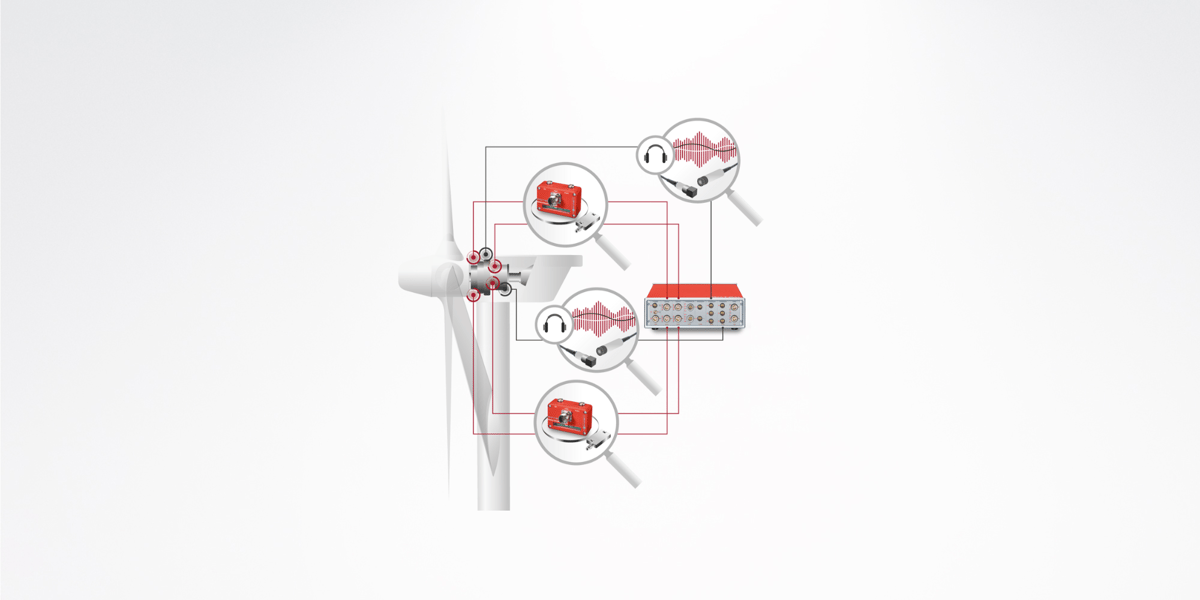
Problems: transmission errors, transmission errors, emissions of structure-borne noise and noise, mechanical wear on components
Goal: Optimal design of wind turbine gearboxes, reduction of structure-borne noise emissions
Each gearbox and the individual parts installed in it are subject to manufacturing tolerances that vary depending on the purpose and location of use of the entire assembly. Due to these manufacturing tolerances in combination with the temperature and load-dependent component elasticities as well as assembly influences, the transfer function of the rotational movement and the torque deviates from the ideal transfer function. This phenomenon is also known as TE (Transmission Error). The more complex a transmission is constructed, i.e. the more gear stages including shafts, wheels and bearings a transmission has, the larger the sum of the individual transmission errors becomes. The consequences of the transmission errors are manifested by increased macroscopic and microscopic wear on the components and component surfaces. Furthermore, they are acoustically perceptible to people due to the emission of structure-borne noise and noise. Therefore, a measurement of the transmission error is necessary. This ensures that the error of each individual gear stage can be quantified.
Consequently, design-related influences, which differ greatly between spur or planetary gears, for example, as well as tooth mesh errors can be analyzed using suitable measurement technology. Using powerful software, order and frequency spectra can be generated in two- and three-dimensional representation and correlations between transmission errors and structure-borne noise emissions can be found. In order to record measurement data, high-resolution incremental sensors are applied to the transmission input and output shafts. However, eccentricities or wave impacts cause measurement errors. Therefore, for large shaft diameters, two speed sensors offset by 180° can be used to eliminate measurement errors in the software. Depending on the shaft diameter, different types of sensors are available, such as one-piece hollow shaft encoders or a two-part sensor system with a separate sensor head and a magnetic tape that spans the shaft. In addition, ideally additional speed sensors are installed on the intermediate shafts inside the transmission. In parallel to the speed detection, structure-borne noise is measured using acceleration sensors at different points in the transmission.
The measured values recorded are evaluated in the time and spectral range.
ROTEC ENGINEERING also supports you with technical engineering knowledge on problems relating to vibration analyzes on engines, transmissions and drive trains. With our know-how, we make a valuable contribution to your product in the areas of timing train validation, valve train optimization, clutch design, transmission errors (TE), transmission and oil balance optimization, drive train measurement and optimization, current and voltage analysis as well as the application of measurement technology.
Analyzes in the time domain
- Dynamic twist angle between transmission input and output shafts
- Load-dependent gearbox stiffness
- Speed-independent vibration developments and structure-borne noise emissions
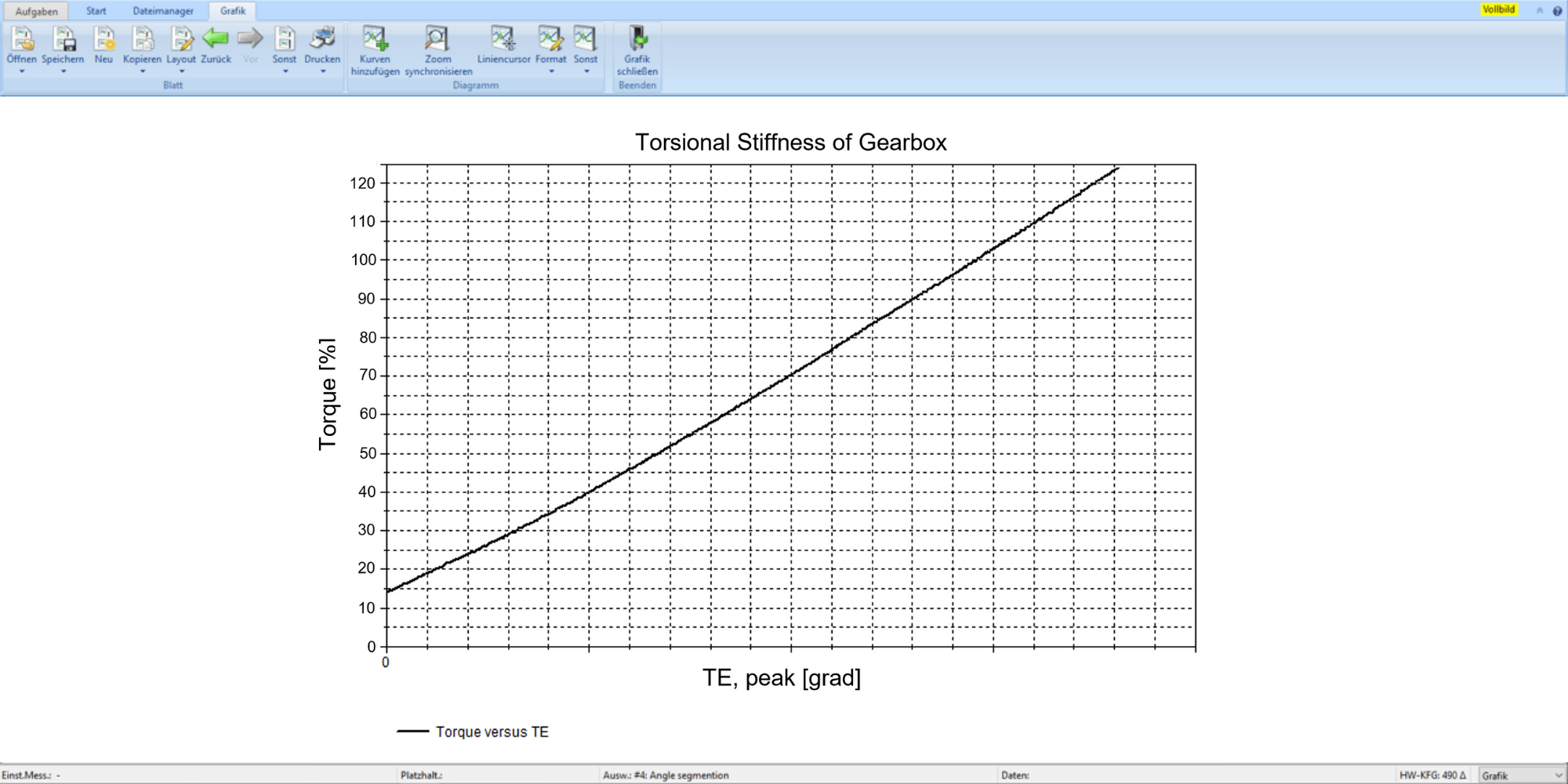
Analyzes in the spectral range
- Examination of tooth meshing by forming order or frequency spectra
- Representation of 3D sequences by linking the spectra from several individual measurements, e.g. via load or speed
- Creation of 2D sectional representations over load or speed to select individual orders or frequencies 2D representation to investigate correlations between transmission errors and structure-borne noise emissions
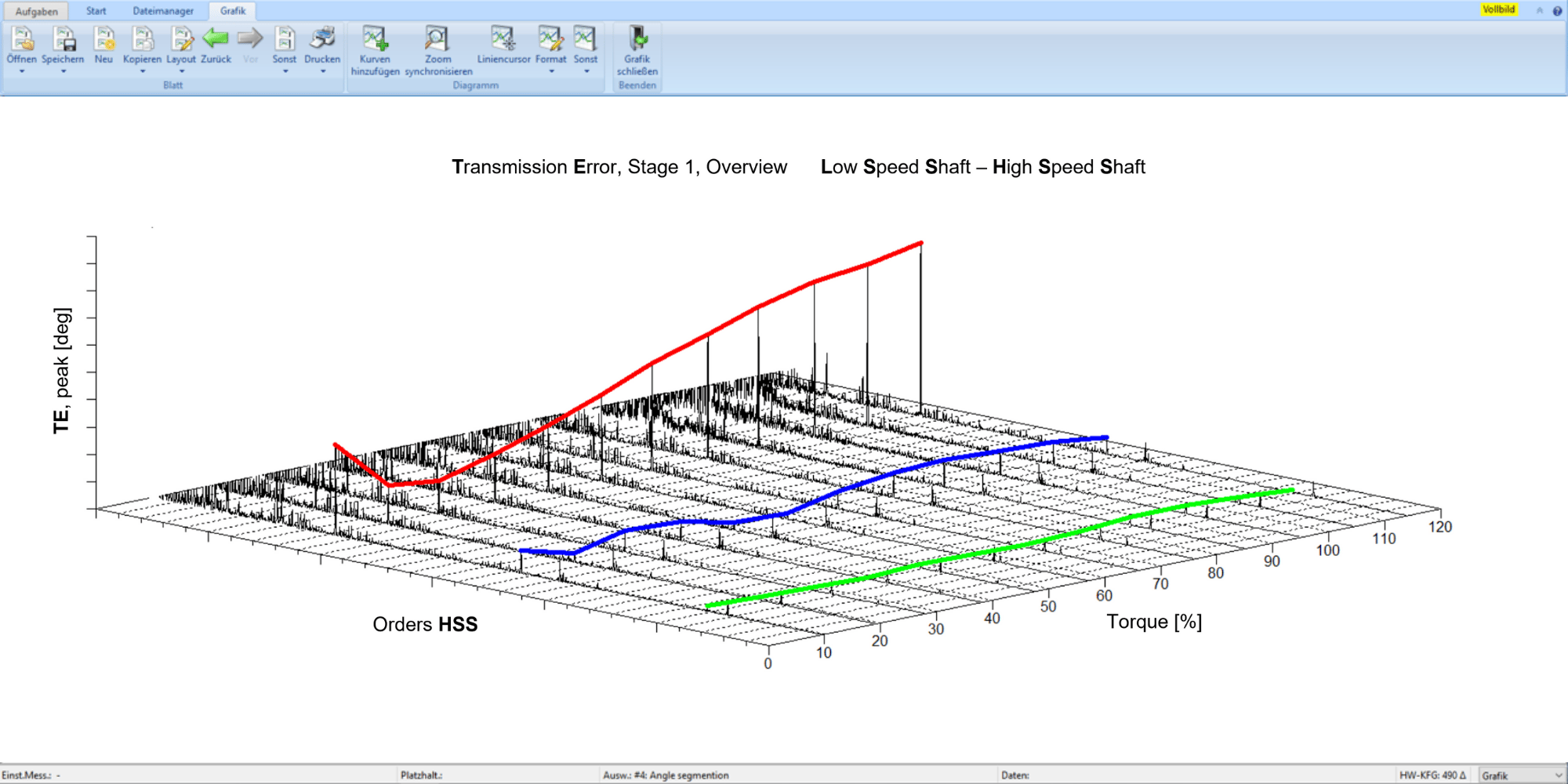
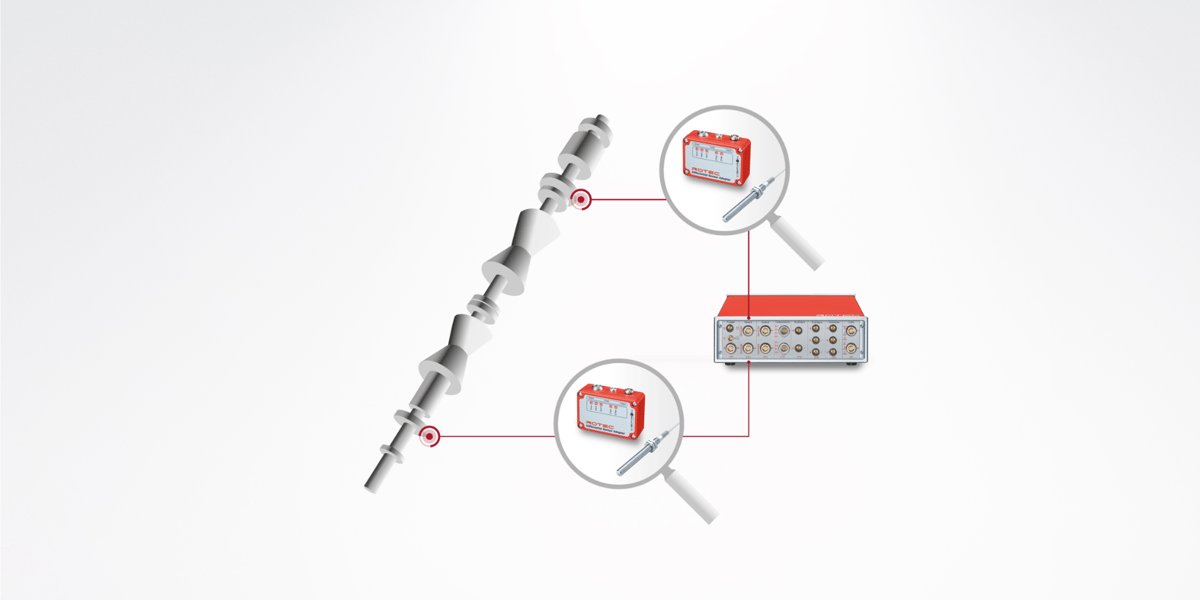
Problems: Mechanical damage to the system, broken shaft of the turbine
Goal: Optimal design of the turbines, prevention of superimposition of torsional vibrations due to frequency fluctuations in the network
Turbines for generating energy can be designed as gas or steam turbines. The increasing development of turbines is moving towards larger and more efficient rotating machines. Due to the enormous mass and speed during operation, the turbines have enormous energy. Critical torsional vibrations can occur both during planned ramp-up and shutdown of turbines for maintenance (“outage season”) and during continuous operation. They lead to mechanical damage, including shaft breakage, and should therefore be avoided. Mains frequency fluctuations in particular can cause torsional vibrations in the turbine during continuous operation. A torsional vibration analysis makes it possible to avoid critical operating points and ensure safety. The aim here is to prevent the torsional vibration from being superimposed by frequency fluctuations in the network, feedback effects and the natural frequency of the system.
The speed measurement of turbines is usually carried out using magneto-resistive sensors on gears. This involves measuring variables such as single-channel variables such as the oscillation angle and using the angular velocity key figure. It is also possible to measure the twist angle between the start and end of the rotor during operation in order to be able to view the dynamic torsion. Measurements over a longer period of time allow insights into the endurance capability under different load conditions to be obtained. These arise from loads from the energy network.
The measured values recorded are evaluated in the spectral range.
ROTEC ENGINEERING also supports you with technical engineering knowledge on problems relating to vibration analyzes on engines, transmissions and drive trains. With our know-how, we make a valuable contribution to your product in the areas of timing train validation, valve train optimization, clutch design, transmission errors (TE), transmission and oil balance optimization, drive train measurement and optimization, current and voltage analysis as well as the application of measurement technology.
Frequency spectra/spectrogram
- Series of high-resolution frequency spectra;
- Frequency resolution: 1/40 Hz, 1/100 Hz, …
- Individual speed measuring points (oscillation angle and angular acceleration) as well as the difference between two speed measuring points (twisting angle, dynamic torsion)
- Even very small oscillation angles (< 1/1000 degree) because of the 12.3 GHz counter on the ROTEC speed measurement card
- Identification of resonance points during acceleration and coasting down
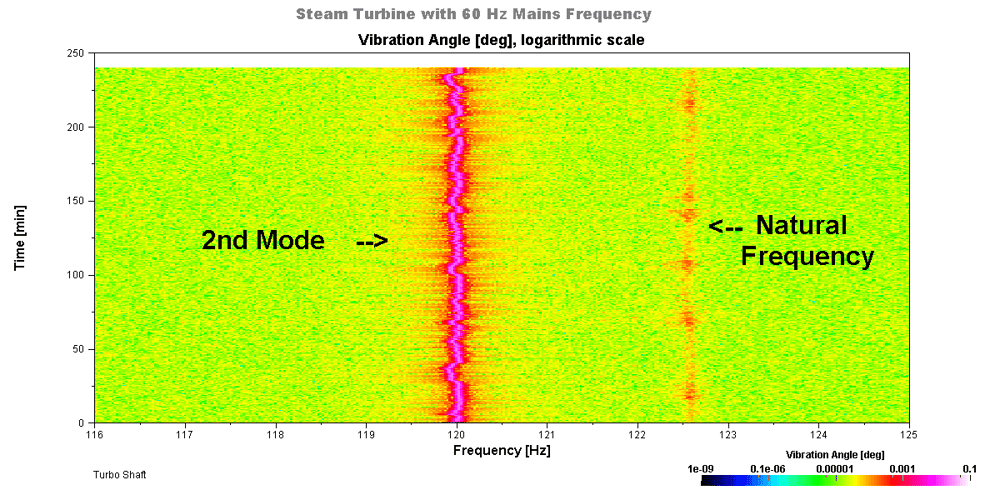
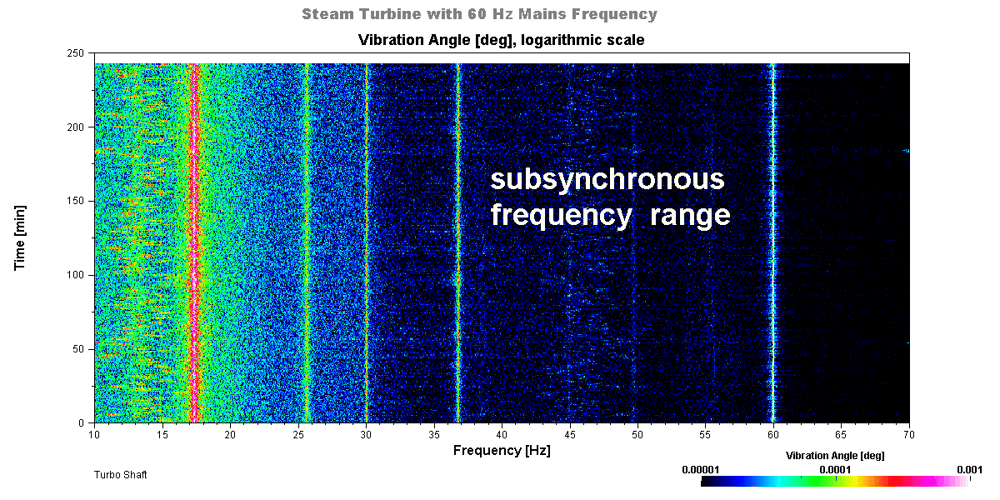
Any more questions?
What does the ROTEC solution for rotation analysis look like and what does RAS mean?
The ROTEC Rotational Analysis System (RAS) has been used for more than 30 years by users in the mechanical engineering, automotive, power generation and motorsport industries for the comprehensive analysis of rotating components.
With its unique measurement method using a 12.3 GHz counter card and a strictly angle-based approach to rotational speed detection and analysis, the RAS system offers users an unparalleled advantage.
ROTEC offers not only optical and magnetic speed sensors including signal conditioning adapters, but also the modular measuring system RASdelta as well as specialized and user-friendly software for measurement and analysis. This enables a complete solution from a single source. The ROTEC measurement technology products are perfectly matched to each other and deliver meaningful results within a very short time after the uncomplicated setup of the measurement chain.
Thanks to the angle-based approach to speed measurement, problems such as sensor vibrations can be detected after the first measurement and rectified immediately. This effectively prevents costly incorrect measurements.
Our team of experts at ROTEC ENGINEERING, consisting of long-standing users, will be happy to assist you with challenging tasks.
Are there options for customizing the measurement systems and software?
The ROTEC RASdelta front end is a versatile modular measurement system that can be individually configured with 8 or 16 measurement cards to meet your specific measurement requirements.
Our RAS software offers you a comprehensive modular system for analyzing rotating components and complex systems. It is an effective tool for machine builders and requires no programming knowledge to carry out measurements or perform evaluations.
If you have specific metrological questions, our experienced ROTEC ENGINEERING consulting team will be happy to support you.
Does ROTEC offer other services in addition to the measuring systems, e.g. individual consulting or project support?
ROTEC offers not only speed sensors, signal conditioning, measurement systems (DAQ) and measurement and evaluation software, but also engineering and consulting services.
Our services include the design of measuring points in CAD, the mechanical processing of components, the application and calibration of sensors, the execution of measurement tasks and the evaluation of measurements in accordance with our customers' requirements, including the presentation of the results. The ROTEC ENGINEERING team can also implement sub-projects as part of project support.
Is there training or technical support for commissioning and integrating the measuring systems?
In addition to our annual ROTEC Training Week, which is held in both German and English, we also offer customized training courses for users. These training courses are specially tailored to your individual application of the ROTEC measuring system and include not only the theoretical basics and a detailed presentation of the software, but also practical demo measurements in your environment. This ensures that future users are optimally prepared for your specific application.
Furthermore, we are happy to support you in the commissioning of new measuring systems to enable you to become familiar with the settings and possibilities of the RAS software as quickly as possible.
How is support ensured and are there self-help options?
In addition to our sales and support team in Munich, which serves the Central European market directly from here, ROTEC also cooperates with local partners in many global markets. These partners support local users with trained personnel for all matters relating to ROTEC measurement technology, first-level support and sales inquiries.
Our customers around the world appreciate the proximity of our sales and support teams, as this enables us to guarantee effective support even for short-term questions.
In addition to personal contact, ROTEC also offers an extensive knowledge database for self-help. Please register for our knowledge database to obtain detailed information on measuring and evaluating torsional vibrations, transmission errors and valve systems, among other things.